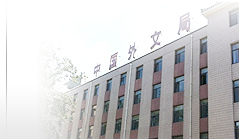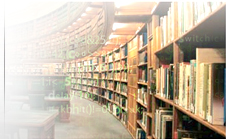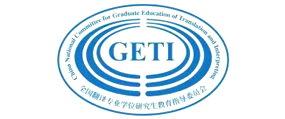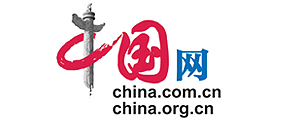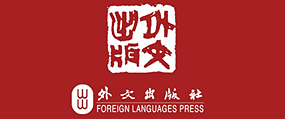特别报道
架设翻译之桥 沟通多元文化——第18届世界翻译大会纪实 / 5
译论研究
翻译本体研究与翻译研究本体 / 谢天振 6
东方学对翻译的影响 / 蒋骁华 11
浅说意义——解构与翻译关键词解读 / 徐敏慧 19
译史纵横
多元视界下的张爱玲的翻译 / 王晓莺 25
翻译教学
本地化与本地化翻译人才的培养 / 苗菊 朱琳 30
书刊评介
系统研究翻译专业建设的力作——《我国翻译专业建设:问题与对策》评介 / 肖维青 梅德明 35
探寻西方翻译史的发展轨迹——《翻译史读本——理论与实践》评述 / 熊兵 39
学人访谈
口译研究:热点问题及发展趋势——对吉尔教授和波齐哈克博士的联合访谈 王斌华 43
译技探讨
《论语》的文化翻译策略研究 / 儒风 50
国内外显化研究现状概述 / 刘泽权 侯羽 55
语料库辅助的汉译英词语翻译初探 / 蒋平 59
汉英翻译中的句法结构转换 / 陈小全 63
试论“替身”词语和“X替”族词的英译 / 邵有学 68
俄语成语的意义及其翻译 / 王金凤 72
译家译事
余光中与翻译 / 罗选民 75
学术争鸣
再谈翻译语境的性质——答彭利元 / 李运兴 78
自学之友
·译家译作·
英译汉:Folly’s Antidote (Arthur M. Schlesinger Jr.) / 叶子南 译 80
翻译导读:解读与注释 / 叶子南 82
汉译英:月迹(贾平凹) / 刘士聪 高巍 译 84
翻译导读:关于《月迹》的语气 / 刘士聪 高巍 86
·新人新作·
习作原文:The Advantages of Stupidity / 88
习作译文:愚笨的好处 / 李可 译 89
点评:译文如何“意”“味”兼得 / 韩子满 90
参考译文:愚钝的好处 / 93
词语选译
中国译协对外传播翻译委员会中译英研讨会最新讨论词汇选登 / 94
英文摘要 / 95
信息广角
邮购信息(77)
本刊稿约(87)
其他(54、67、96)
中文摘要
翻译本体研究与翻译研究本体
谢天振 上海外国语大学
摘 要:某些国内学者认为,当代国外译论、尤其是文化学派的译论偏离了翻译的本体,呼吁我们国内的翻译研究应该回归翻译本体。本文作者则提出,不要用翻译本 体取代翻译研究的本体,而要仔细辨清两者的关系。如果说翻译的本体是指翻译过程中两种语言文字的转换过程本身,那么翻译研究的本体除了语言文字转换过程的 本身之外,它必然还要包括翻译过程以及译者、接受者等翻译主体和翻译受体所处的历史和文化语境,以及对两种语言文字转换产生影响和制约作用的各种文本以外 的因素。正是翻译研究本体的这些特征决定了翻译学不可能是一门单纯的语言学科,而是一门综合性、边缘性、交叉性的独立学科。作者认为,只有认清了翻译研究 本体的这种内涵和性质特征,才可能保证我国的翻译研究和翻译学学科建设沿着健康的道路向前发展。
关键词:翻译本体研究;翻译研究本体;翻译学
中图分类号:H059 文献标识码:A 文章编号:1000-873X (2008)05-0006-05
东方学对翻译的影响
蒋骁华 澳门理工学院
摘 要:东方学首先是一门学科,其次才是一种“欧洲中心主义”的意识形态。本文通过大量翻译史实和翻译实例探讨了东方学对翻译多方面、多层次的影响,分析了 因东方学的影响而产生的丑化翻译、美化翻译、异化翻译等。本文认为东方学的发展促发了大量的翻译实践,导致了东学西渐的高潮,有力地推动了东西文化交流; 东方学学术性的一面给翻译带来了严谨,其政治性的一面,即欧洲中心主义和殖民主义,给翻译打上了清晰的意识形态烙印。
关键词:东方学;翻译;影响
中图分类号:H059 文献标识码:A 文章编号:1000-873X (2008)05-0011-08
浅说意义——解构与翻译关键词解读
徐敏慧 香港理工大学
摘 要:本文尝试分析了德里达解构主义理论话语中的一组与翻译关系密切的概念,包括差异、延异、印迹、再制、可译性、重生以及意图,等等,说明德里达在解构 了传统翻译理论中二元对立的诸多关系的同时,也论证了翻译中这些相关概念亦此亦彼的逻辑关系,并阐明了意义的不确定性这一核心思想。
关键词:德里达;解构;概念;意义的不确定性;翻译
中图分类号:H059 文献标识码:A 文章编号:1000-873X (2008)05-0019-06
多元视界下的张爱玲的翻译
王晓莺 香港浸会大学
摘 要:完整形态的张爱玲研究应该包括张爱玲的文学创作及其翻译研究。然而张爱玲的翻译一直缺席于中国翻译史书写,处于翻译文学系统的边缘地位。本文拟用多 元系统理论,分两方面——分别是张爱玲对美国当代文学的翻译、张爱玲对清末吴语小说《海上花列传》的翻译,来考察缘何张爱玲缺席当代中国翻译史书写。
关键词:张爱玲的翻译;翻译史书写;多元系统理论;边缘
中图分类号:H059 文献标识码:A 文章编号:1000-873X (2008)05-0025-05
本地化与本地化翻译人才的培养*
苗菊 朱琳 南开大学
摘 要:本地化行业的发展促生了本地化翻译人才的培养。笔者在对加拿大约克大学翻译专业教学调研中深受启发,特提出翻译专业课程设置中需要开设本地化课程, 以适应职业化翻译人才培养的需要。本文分析了本地化与翻译的关系,基于对本地化工作内容的描述,指出了本地化翻译人才的培养目标和国外大学本地化翻译教学 的理念和内容,从而为我国职业化翻译人才的培养作前期思想上和具体操作上的准备。
关键词:本地化;翻译;本地化翻译;翻译教学
中图分类号:H059 文献标识码:A 文章编号:1000-873X (2008)05-0030-05
《论语》的文化翻译策略研究
儒风 南京大学
摘 要:通过对《论语》英译本中五种文化翻译策略的分析,本文试图说明文化翻译策略与译本接受之间的关系。译本可以作为文化的“他者”而存在,可以作为审美 文化的喻体,也可以作为一种文化理想来追求。作为翻译的主体,译者往往会在翻译策略中寄托自己对文化的想象。正是在这种想象之中,翻译完成了对新秩序的构 想和新文化的移植。
关键词:《论语》;文化翻译策略;文化想象
中图分类号:H059 文献标识码:A 文章编号:1000-873X (2008)05-0050-05
国内外显化研究现状概述*
刘泽权 侯羽 燕山大学
摘 要:随着翻译研究进入基于语料库的语言学研究阶段,翻译研究者对“翻译普遍性”产生了浓厚的兴趣,使其成为翻译研究中一个全新的视角。作为翻译普遍性中 的重要一员,“显化”目前受到了最为广泛的关注。鉴此,本文将从显化定义、显化假说、显化类别以及国内外显化研究最新成果等多个视角对显化研究现状进行全 面介绍,以期唤起我国译界在该领域中发挥更大的作用,以更加积极的姿态与国际译界开展显化研究对话。
关键词:翻译研究;翻译普遍性;显化;显化假说
中图分类号:H059 文献标识码:A 文章编号:1000-873X (2008)05-0055-04
Contents
The Study of Translation Per Se versus the Translation Studies / Xie Tianzhen 6
Orientalism and Translation: A Re-consideration / Jiang Xiaohua 11
Toward an In-depth Understanding Key Derridean Concepts in
Translation Theories / Xu Minhui 19
Eileen Chang’s Translation: A Polysystemic Perspective / Wang Xiaoying 25
Localized Training as an Indispensable Element of Translation Curriculum / Miao Ju & Zhu Lin 30
A Study of the Cultural Translation Strategies of The Analects / Ru Feng 50
Current Studies on Explicitation at Home and Abroad / Liu Zequan & Hou Yu 55
E/C Translation Practice: Folly’s Antidote (Arthur M.Schlesinger Jr.) / Ye Zinan 80
C/E Translation Practice: After the Moon (Jia Pingwa) / Liu Shicong & Gao Wei 84
Abstracts of Major Papers in This Issue / 95
Abstracts of Major Papers in This Issue
The Study of Translation Per Se versus the Translation Studies
by Xie Tianzhen (Shanghai International Studies University, China) p.6
Abstract: The cultural turn which studies of translation in the West have taken, coupled with the introduction into China of major theoretical statements such a turn has produced, is generating a heated debate among Chinese scholars of translation. Some scholars hold that contemporary theoretical assumptions on translation, especially those embraced by the“cultural school,” deviate from a proper understanding of the “translation itself,” and a return to the study of translation per se is urgently needed. The author of this paper argues however that a careful distinction should be made between the noumenon of translation and that of translation studies. While the former refers basically to the transferring process of the two languages involved, the latter will no doubt go beyond that by incorporating subjective elements such as the translator and the receptor, objective elements such as the relevant historical conditions and cultural contexts, as well as many other extra-text factors which influence and condition the transferring process of the two languages concerned. This broad coverage makes it impossible for translation studies to be a purely linguistic conception. Instead, it is bound to be an independent discipline that is integrated, marginal and cross-disciplinary. Only by taking the rich texture and the far-reaching scope of translation studies into consideration will a sound development of the discipline in our country be assured.
Key words: noumenon; translation studies, discipline
Orientalism and Translation: A Re-consideration
by Jiang Xiaohua (Macao Polytechnic Institute, China) p.11
Abstract: This paper surveys a host of historical events and translation examples in its attempt to rethink Orientalism’s multifarious and multifaceted influences on translation. Among its findings and conclusions are: 1) the development of Orientalism marks a climax in the history of translation, boosting cultural exchanges between the East and the West; 2) Orientalism is more an academic discipline than an ideology: while its scholarly side imposed a high standard of rigor and precision on translation, its political side stamped the practice with the ideology of Eurocentrism and colonialism.
Key words: Orientalism; translation; influence
Toward an In-depth Understanding Key Derridean Concepts in Translation Theories
by Xu Minhui ( Hong Kong Polytechnic University, China) p.19
Abstract: This paper analyzes some key Derridean concepts that have been popularly applied to the study of translation, including difference, différance, trace, iterability, translatability, survival, and intention. It concludes that while Derrida’s perspective has led to a deconstruction of many binary notions in traditional theories of translation, it also casts light on the logical relationship of reciprocal coexistence among these notions and directs our attention to the fundamental instability of meaning.
Key words: Derrida; deconstruction; concept; non-positive meaning; translation
Eileen Chang’s Translation: A Polysystemic Perspective
by Wang Xiaoying (Hong Kong Baptist University, China) p.25
Abstract: A comprehensive study of Eileen Chang should ideally consist of research into both her creative writings and her translations. Yet Chang’s identity and practice as a translator tend to be ignored by China’s historians of translation, and her works of translation have been relegated to a peripheral position in the polysystem of translated literature in Chinese. This paper looks into the above phenomenon and offers an explanation for the persistent marginalization of Chang’s translation.
Key Words: Eileen Chang; translation; China; history; Polysystem Theory; peripheral
Localized Training as an Indispensable Element of Translation Curriculum
by Miao Ju & Zhu Lin (Nankai University, China) p.30
Abstract: With its specialized socio-economic and cultural conditions, every locale has its special needs for translation and interpretation services. This situation has given rise to academic programs for training personnel who specialize in the translation of local subjects and topics, such as the one being offered at York University in Canada. Drawing from the model of York University’s localized training, this article expounds on the relation between localization and translation, urging that localized courses be added to China’s translation and interpretation curricula.
Key words: localization; translation; translation instruction
A Study of the Cultural Translation Strategies of The Analects
by Ru Feng (Nanjing University, China) p.50
Abstract: Using major English versions of The Analects as exemplars, this paper devotes itself to exploring the relationship between the strategy of cultural translation adopted by the translator and the reception of the version he has thus produced. The author maintains that a version of translation can be variously imagined as “the other” of a certain culture, the expression of a culture-specific body of aesthetic values, or the embodiment of a cultural ideal. The translator, functioning as the subject of translation, always projects his cultural imagination into the translation strategies he employs, and it is through such a projecting process that the vision of a new cultural order takes shape, and takes root in the target cultural setting as well.
Key words: The Analects; cultural translation; strategy; imagination
Current Studies on Explicitation at Home and Abroad
by Liu Zequan & Hou Yu (Yan Shan University, China) p.55
Abstract: As Translation Studies (TS) ushers in the phase of corpus-based linguistic studies, researchers in this discipline are becoming keenly interested in the concept of Translation Universals (TU), and considerable attention is being directed to explicitation, a key aspect of TU. This paper offers a preliminary overview of current studies of explicitation both at home and abroad, in an attempt to draw further attention from domestic translation theorists to this promising new area of research.
Key Words: translation studies; translation universals; explicitation

